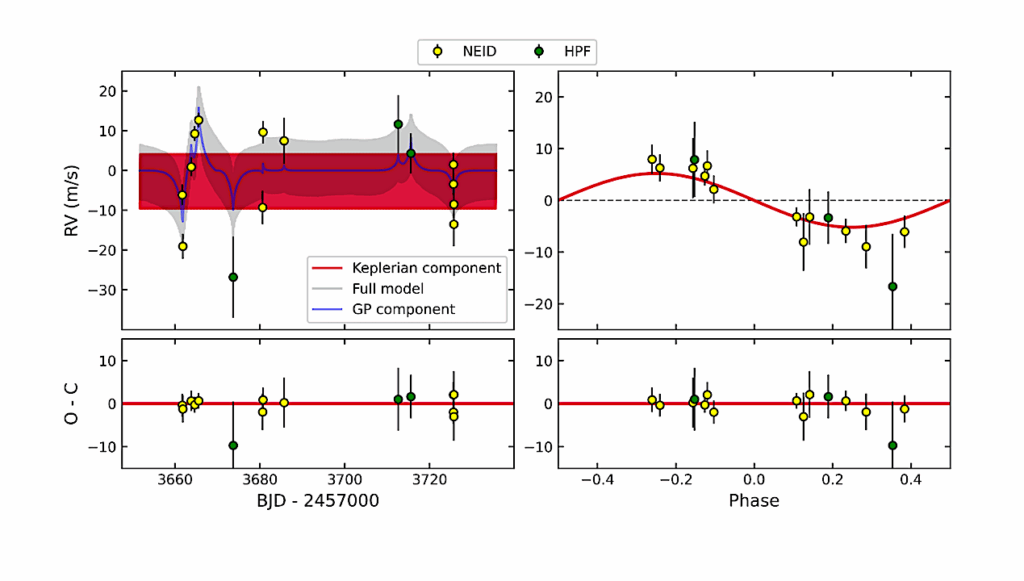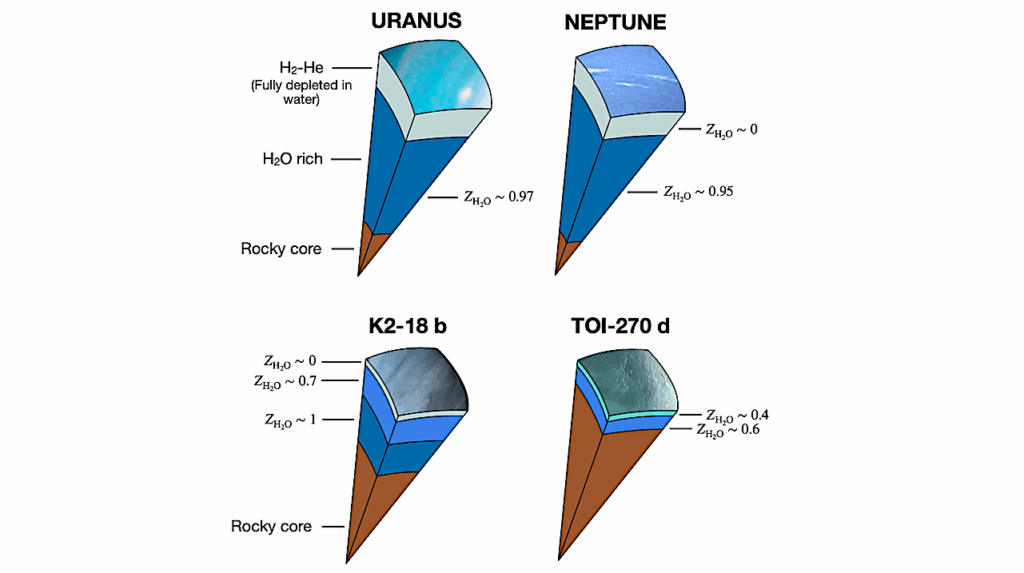A Detailed Analysis Of The Gl 486 Planetary System

The Gl 486 system consists of a very nearby, relatively bright, weakly active M3.5 V star at just 8 pc with a warm transiting rocky planet of about 1.3 R_Terra and 3.0 M_Terra that is ideal for both transmission and emission spectroscopy and for testing interior models of telluric planets.
To prepare for future studies, we collected light curves of seven new transits observed with the CHEOPS space mission and new radial velocities obtained with MAROON-X/Gemini North and CARMENES/Calar Alto telescopes, together with previously published spectroscopic and photometric data from the two spectrographs and TESS. We also performed interferometric observations with the CHARA Array and new photometric monitoring with a suite of smaller telescopes.
From interferometry, we measure a limb-darkened disc angular size of the star Gl 486. Together with a corrected Gaia EDR3 parallax, we obtain a stellar radius. We also measure a stellar rotation period at P_rot ~ 49.9 d, an upper limit to its XUV (5-920 AA) flux with new Hubble/STIS data, and, for the first time, a variety of element abundances (Fe, Mg, Si, V, Sr, Zr, Rb) and C/O ratio.
Besides, we impose restrictive constraints on the presence of additional components, either stellar or substellar, in the system. With the input stellar parameters and the radial-velocity and transit data, we determine the radius and mass of the planet Gl 486 b at R_p = 1.343+/0.063 R_Terra and M_p = 3.00+/-0.13 M_Terra. From the planet parameters and the stellar element abundances, we infer the most probable models of planet internal structure and composition, which are consistent with a relatively small metallic core with respect to the Earth, a deep silicate mantle, and a thin volatile upper layer. With all these ingredients, we outline prospects for Gl 486 b atmospheric studies, especially with forthcoming James Webb Space Telescope observations (abridged).
J. A. Caballero, E. Gonzalez-Alvarez, M. Brady, T. Trifonov, T. G. Ellis, C. Dorn, C. Cifuentes, K. Molaverdikhani, J. L. Bean, T. Boyajian, E. Rodriguez, J. Sanz-Forcada, M. R. Zapatero Osorio, C. Abia, P. J. Amado, N. Anugu, V. J. S. Bejar, C. L. Davies, S. Dreizler, F. Dubois, J. Ennis, N. Espinoza, C. D. Farrington, A. Garcia Lopez, T. Gardner, A. P. Hatzes, Th. Henning, E. Herrero, E. Herrero-Cisneros, A. Kaminski, D. Kasper, R. Klement, S. Kraus, A. Labdon, C. Lanthermann, J.-B. Le Bouquin, M. J. Lopez Gonzalez, R. Luque, A. W. Mann, E. Marfil, J. D. Monnier, D. Montes, J. C. Morales, E. Palle, S. Pedraz, A. Quirrenbach, S. Reffert, A. Reiners, I. Ribas, C. Rodriguez-Lopez, G. Schaefer, A. Schweitzer, A. Seifahrt, B. R. Setterholm, Y. Shan, D. Shulyak, E. Solano, K. R. Sreenivas, G. Stefansson, J. Stuermer, H. M. Tabernero, L. Tal-Or, T. ten Brummelaar, S. Vanaverbeke, K. von Braun, A. Youngblood, M. Zechmeister
Comments: A&A, in press. See this https URL
Subjects: Earth and Planetary Astrophysics (astro-ph.EP); Solar and Stellar Astrophysics (astro-ph.SR)
Cite as: arXiv:2206.09990 [astro-ph.EP] (or arXiv:2206.09990v1 [astro-ph.EP] for this version)
Submission history
From: José A. Caballero
[v1] Mon, 20 Jun 2022 20:22:52 UTC (7,085 KB)
https://arxiv.org/abs/2206.09990
Astrobiology,








